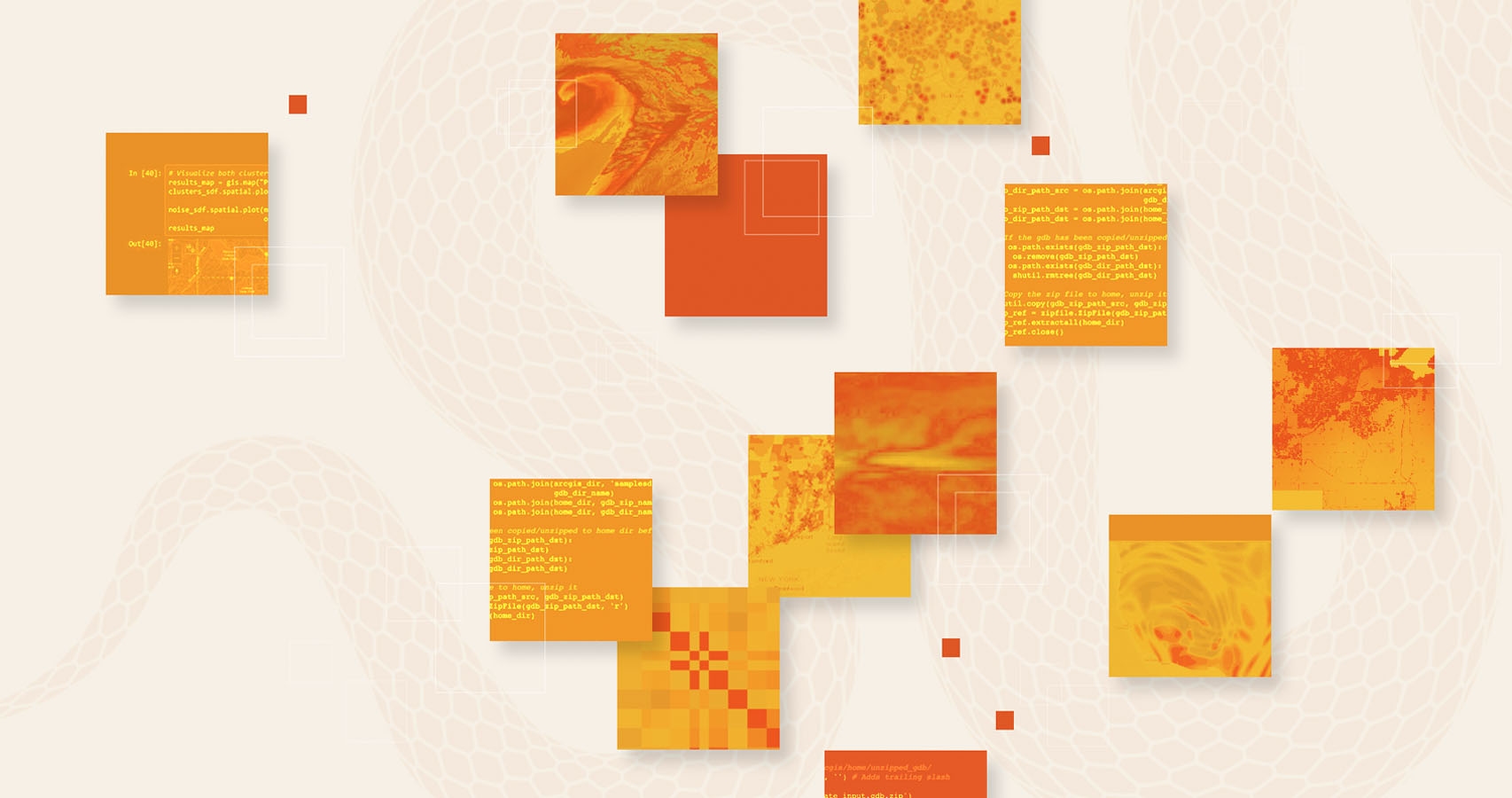Spatially represent your data
Given that 80 percent of all data contains location as a variable, you can use the ArcGIS Python libraries to represent and visualize your data on a map, giving it context and making it relative to space and time.

With its widespread use and popularity, Python is the preferred language within ArcGIS and continues to evolve. It is prevalent throughout the ArcGIS platform and encompasses a broad analytical framework that interoperates with the larger open-source ecosystem.

Learn about ArcPy, a comprehensive and powerful library for spatial analysis, data management, and data conversion.
Start using ArcGIS API for Python, a simple and lightweight library for analyzing spatial data, managing your Web GIS, and performing spatial data science.
Begin a conversation online.
Speak with a representative.